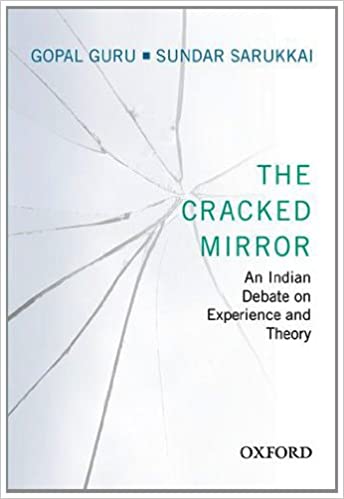Please sign (inserting your name etc in the brackets) this appeal to the Prime Minister of India to include Pali, the ancient language, in the 8th Schedule of the Constitution by going to this site.
~
Letter to Hon. Prime Minister of India For Inclusion of Pali, ancient Indian language, in Constitution of India
Hon. Prime Minister of India,
South Block, Raisina Hill,
New Delhi, India-110011.
Respected Sir,
Myself {NAME} from {CITY} urging for following request.
Pali: An Ancient Language
Pali is one of the ancient languages in India. Buddha had chosen Pali language for his teachings since it was the “common man’s” language. Buddha’s era was 600 BC. That means Pali language is very ancient and has at least 2500 years of history. Buddha’s teachings are in rich classical Pali language. Any language reaches to that classical level, does exist and used in day-to-day communications around 500 years before it reach to classical stage. In this context, we can state that Pali has around 3000 years of history!
In around 300 BC Samrat Ashoka scripted the Buddha’s teaching in manuscripts. The manuscripts of Emperor Ashoka are in Pali language written in Brahmi and Kharoshti scripts that are largely found from Kandahar (Afghanistan) to Andhra Pradesh and Saurashtra, Pakistan to Odisha. This gives us the magnitude of Pali speaking region in India and in Asia. Pali, in some regions, also known as Magadhi since it was the language of Magadh Empire. (Reference: History of Pali Literature, by B.C.Law)
After 3rd Sangitee (Buddhist way of conference) the collection of Buddha’s thoughts were started and then its get sorted. In 4th Sangitee (29 BC) in Sri Lanka, the thoughts of Buddha were scripted/written in Pali language. (Reference: Saddhammasangaho, by Dhammakitti)
Pali: An Independent Language
The above Pali facts focuses that Pali has around 3000 years of history. There is a view, that Sanskrit and Pali are the ancient languages in India and derived from one parent language. That means the root of Pali and Sanskrit languages is same. One thought is also there, which says that Pali language had its own writing script (LIPI)! (Reference: Elementary Pali Course, by Narada)
Pali : National Importance
- We find Buddha’s all teachings are in Pali language. So to learn Buddha’s teachings, there is only prime way, learn Pali language!
- Pali language help us to enhance our knowledge about History, Geography, Economics, Linguistics, Ancient and Modern Science and so on…
- Pali language became helpful to resolve the deadlocks of Indian languages and their roots, their dialects. The chronological orders became more clear.
- Because the manuscripts of Samrat Ashoka in Pali language, the evidence for historical dates matches in Asian and middle east countries.
- India has accepted Parliamentary Democracy in 26 January 1950 by implementing the Constitution of India. Buddhism itself has democratic principles which will certainly help India become more stronger democratic nation!
Pali and Foreign Policy of India
1. The empire of Samrat Ashoka was wide spread. His empire included today’s countries like Pakistan, Afghanistan, Nepal, Bhutan, Bangladesh, Myanmar and Sri Lanka. All these countries are India’s neighbour countries. To keep peace and harmony in Indian sub-continent, Pali and Buddhism is the best way to go!
2. Buddhism was spreaded in Indian sub-continent and other countries in Asia, Europe, East and Middle East. Pali is the main mediator between India and these countries/regions.
3. One of the principles of foreign policy of India is to maintain good relations with neighbour countries. So that India will not need to spend good amount of money, efforts in making/developing weapons, artillery. Thus India (and its neighbour countries too) can focus on radical development of their countries.
4. Buddhism teaches us Metta Bhavana (loving kindness) which will really help in eliminating the war situations in neighbour countries.
Pali and International Relations
1. Buddhism is the most respected way of living life in the world. Buddhism has its root in India. Pali was the main language of Buddhism. Thus India need to promote Pali and Buddhism to improve its international relations with other countries.
2. Because of Buddhism and Pali language, all Buddhist countries can be in favor of India in its critical situations. And India can approach other non-Buddhist countries by promoting education in Pali and Buddhism.
Pali, Buddhism and Tourism of India
- Buddhism is the prime historical cause which binds countries in Indian sub-continent culturally.
- Since 6/7th century BC Buddhist Universities like Nalanda, Takshashila, Odantapuri, Vikramshila were became the source of knowledge of all subjects. (Reference: Education in Ancient India)
- People from countries in Indian sub-continent and in East Asia come/visits to India to study Pali, Buddhism, Human Sciences, Ancient Sciences.
- If India again promotes Pali and Buddhism, India will become the hub of knowledge in near future.
- Tourists and scholars from countries in Indian sub-continent, East Asia, South Asia, Middle East, Europe, America, Australia do visit India to study Indian culture, Indian history and mostly Buddhism. For this, Pali language is the main mediator between tourist visits to India. (Experienced this at Ajintha, Bodhgaya, Nalanda like places)
- Countries like Japan, Thailand, Sri Lanka, Myanmar, Indonesia gives donations/funds to serve and maintain the Buddhist places (ie. Ajintha, Bodhgaya, Sanchi) spreaded all over India.
- Most of Buddhist cultured countries like Sri Lanka, Nepal has independent government departments, ministry to promote Pali and Buddhism existed in their country. If India sooner or later increases its interaction between these ministries, that can turn into cultural tourism and India will get more tourists every year in increasing order.
Pali and Buddhist Universities
- India had Nalanda, Takshashila, Odantapuri, Vikramshila ancient universities to study Pali and Buddhism and to spread Buddha’s thoughts all over the world.
- Recently Sanchi Pali and Buddhist University was inaugurated by Mahinda Rajpakshe, Hon. President of Sri Lanka on 22 September 2012 at Sanchi (Madya Pradesh, India).
- There are many institutes who teaches Pali and Buddhism, not only in India but in foreign countries too. Most of the Buddhist countries like Nepal, Bhutan, Sri Lanka, Myanmar, Thailand, Indonesia, Japan has Buddhist Monastery to teach Buddha’s thoughts and to learn Pali language.
- The Buddhist Monks do research on Buddha, Buddhism, Indian Culture, Buddhist Countries, Indian History mostly in Pali language.
- Monks were having permission to keep medicines with them as Monks were making those medicines by their own.
- Buddhist Monks were masters in various subjects and in science. Like above, there are lot things we need to discover. And Pali language is the main way/source to find out those awesome researches!
Centre, States and Pali Development
- Since independence of India people noticed that neither centre nor states has shown much interest in research and development of Pali language.
- After independence National Sanskrit Institute (with 9 campus as deemed university) was established by Indian Government, but the same efforts cannot be seen for propagation of Pali language and Buddhist studies.
- There are several universities established by various states, but again there is a discrimination with Pali language and its development in states.
- In 1951, Nav Nalanda Mahavihara was established in Bihar state by Government of India. Bhante Jagdish Kashyap is looking after this institution. But Government has not reserved financial support in central budgets, nor taken any steps to develop or expand this institute. But on the other hand other subjects are being taught now in this institute and Pali language kept far behind or un-noticed. (Reference: Nav Nalanda Mahavihara, Bihar http://www.nnm.ac.in/)
Pali : Classical Language
In India there are no specific norms to declare any Indian language as classical. In general, the world states any language as a classical language on following basis:
- It should have evolved independently.
- It should not be dependent on other languages.
- It should be ancient.
- It should have written evidences.
- It should have been used in literature.
If we look at the above general norms of classic language, Pali does satisfy all the norms.
- Pali language has evolved independently.
- Pali language is an independent language. So many languages and dialects in India are actually influenced by Pali language!
- Pali language is an ancient and has history of 3000 years. The era of Pali language’s existence goes to 900 BC.
- There are lots of written evidences of Pali language in paper, manuscripts etc. forms.
- Pali language has been used in literature.
Hence we have to declare Pali as a classical language. There is no reason to deny this fact.
Include Pali Language in 8th Schedule of the Constitution of India
Based on the above facts, we hereby appeal to Hon. President of India, Hon. Prime Minister of India and all members of the Parliament of India (both Loksabha and Rajyasabha) to have discussion, debate over inclusion of Pali language in 8th Schedule of the Constitution of India.
Let’s have discussion with scholars and intellectuals in various universities and Pali language and Buddhist study centres all over India.
~
With the hope of positive outcomes,
{Name}
~
A copy of this appeal has been forwarded to:
Hon. President of India
Hon. Vice President of India
Hon. Minister of Home Affairs
Hon. Minister of Law and Justice
Law Commission of India
National Commission for Scheduled Castes
Secretary to the President of India
Secretary to the Vice President of India
Adv. Prakash Ambedkar, BBM
Mayawati, BSP
Sharad Yadav, JD(U)
Ramvilas Paswan, LJP
~~~
[Via Karthik Navayan]










